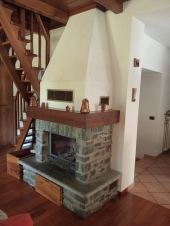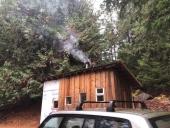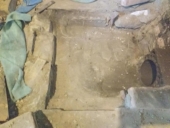



Peter van den Berg wrote:This is the lining on the inside of the bell. This is where the greatest thermal load is expected in the bell, hence the extra protection. As a hindsight, it could have been one brick higher....




jordan barton wrote:So spent the day making up cob to seal up the feedtube/burn tunnel. Spent quite some time coming up with the best method for cutting the ceramic wool. I wish it came in different sizes, as I end up with a bunch of offcuts. 8" x 15", 8" x 12". Hope they are useful in the future.
jordan barton wrote: Luckily I was able to find the perfect soil for making the cob. I didn't need to screen it or add anything, besides the wheat straw. I usually look for soil that has bug holes in it on the surface. I imagine its mason bee holes, but its probably not. Eitherway I enjoy looking for good soil.



